
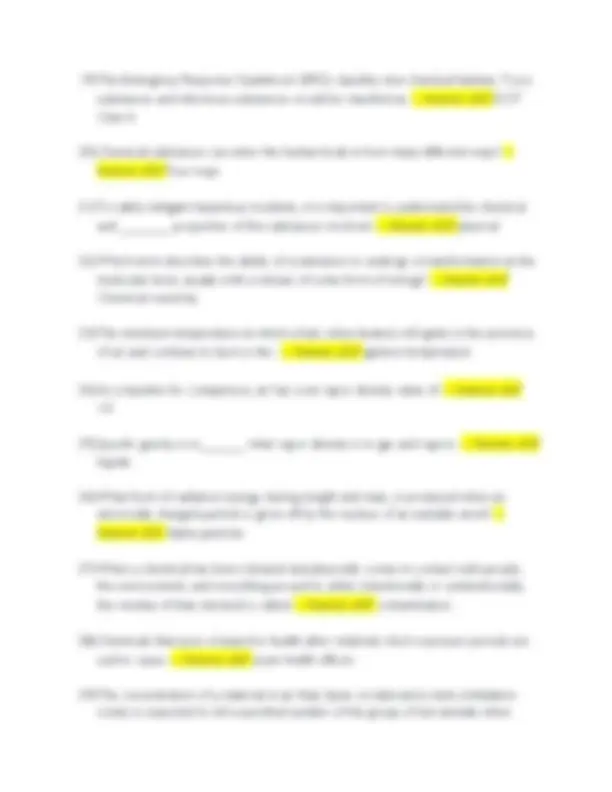
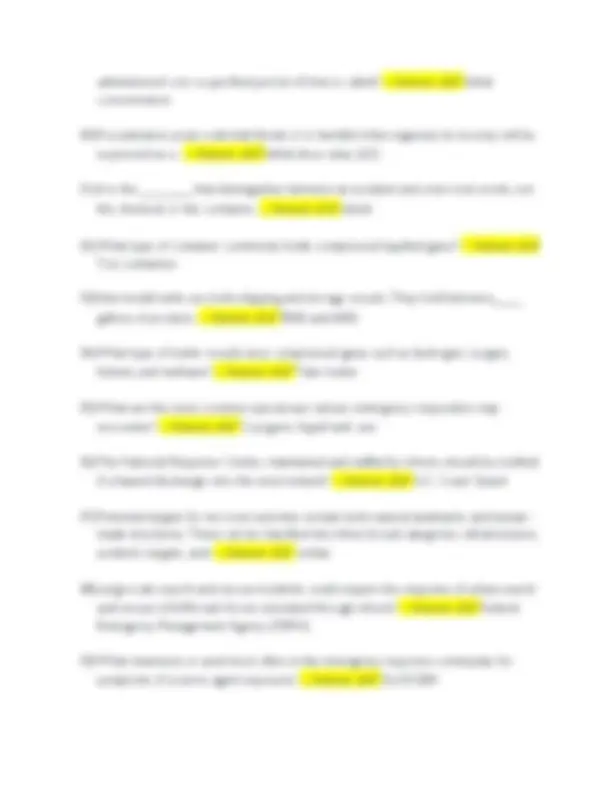
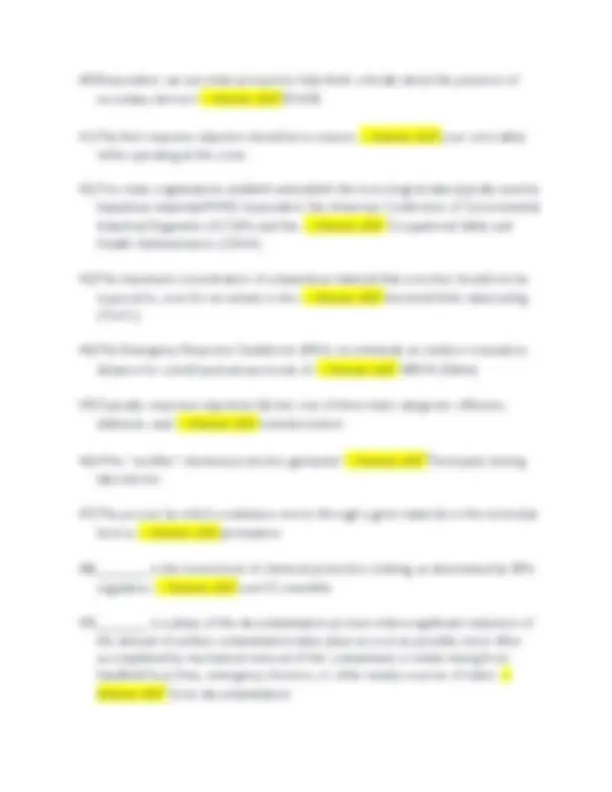
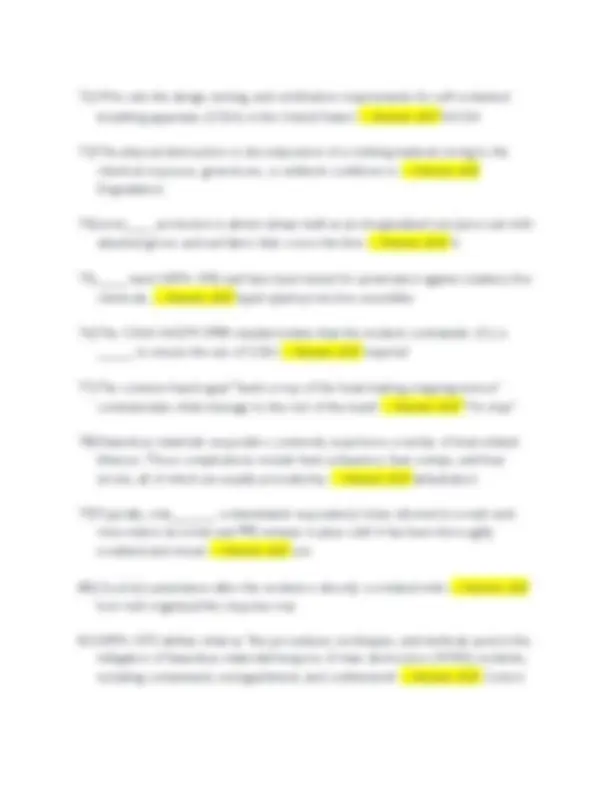
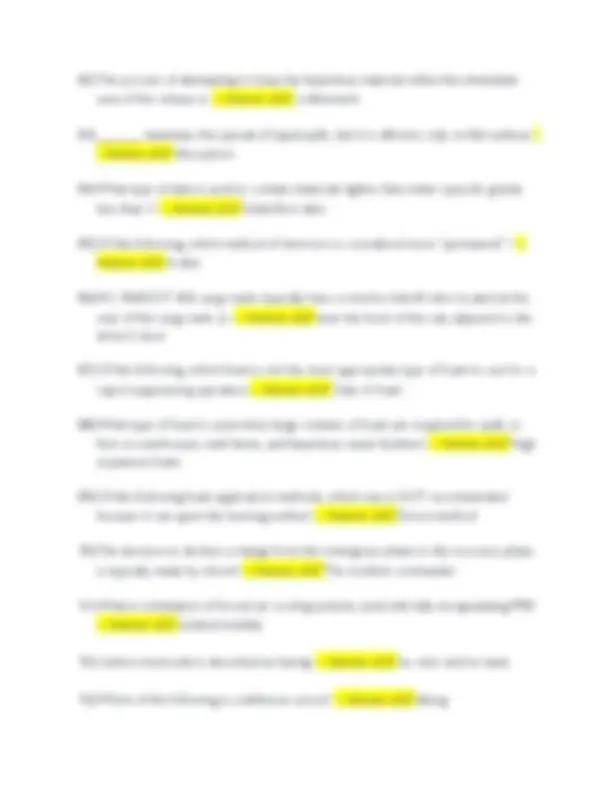
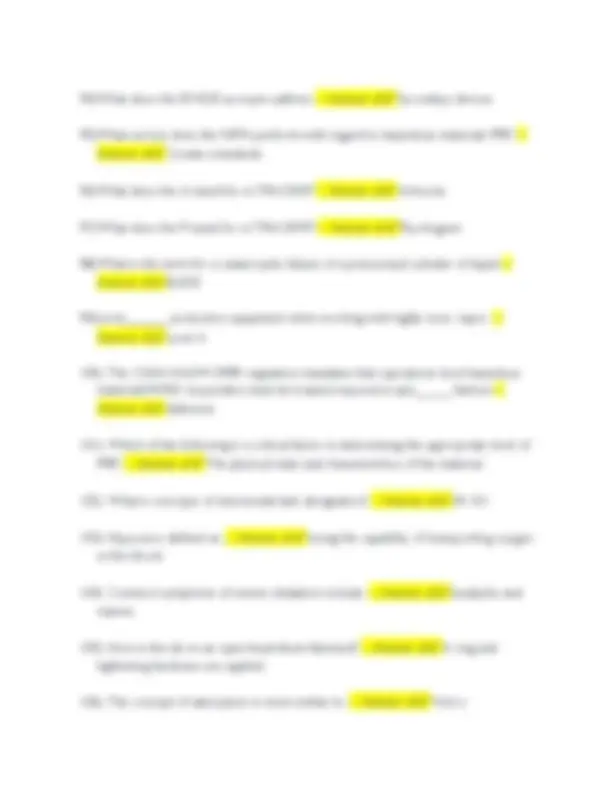
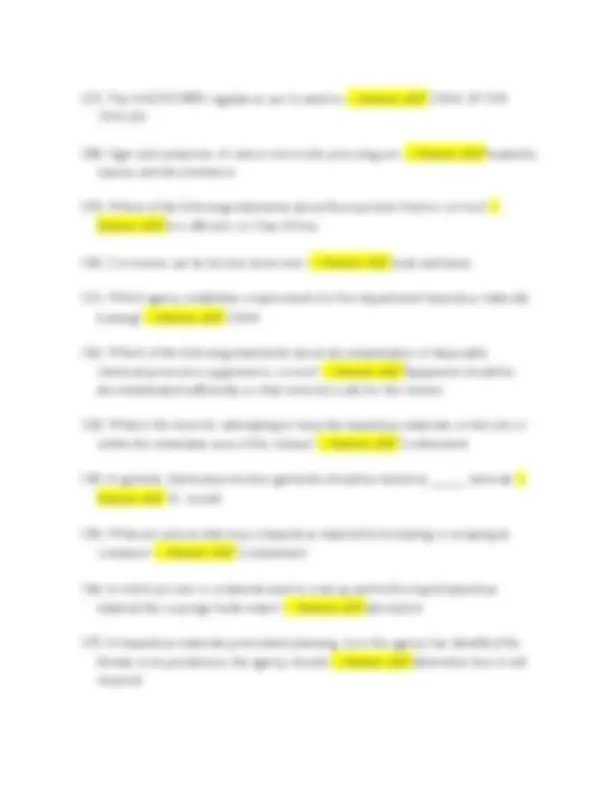
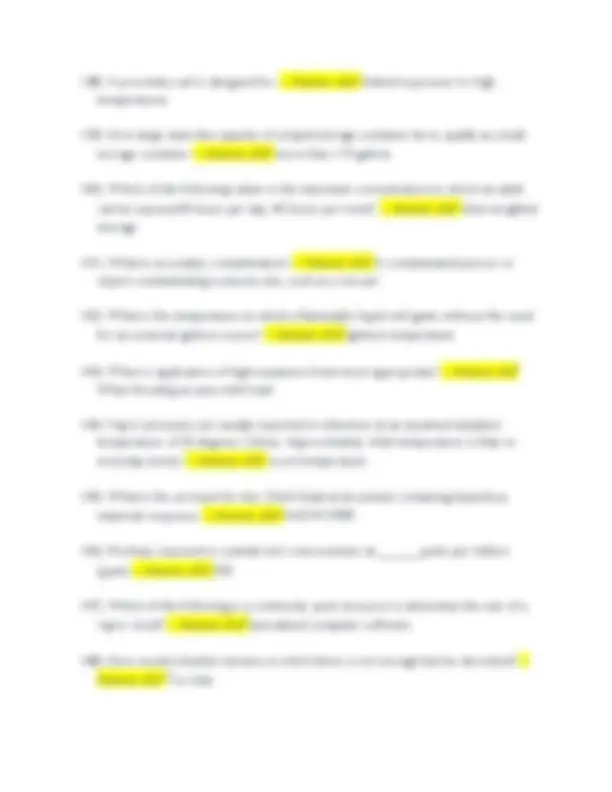
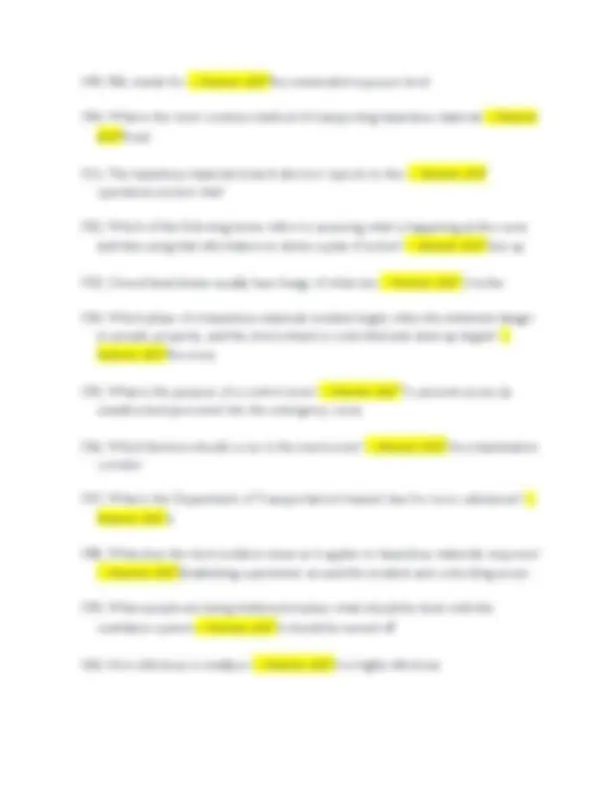


Study with the several resources on Docsity

Earn points by helping other students or get them with a premium plan


Prepare for your exams
Study with the several resources on Docsity

Earn points to download
Earn points by helping other students or get them with a premium plan
Community
Ask the community for help and clear up your study doubts
Discover the best universities in your country according to Docsity users
Free resources
Download our free guides on studying techniques, anxiety management strategies, and thesis advice from Docsity tutors
A comprehensive set of questions and answers covering key concepts in hazardous materials management. It is designed to help students prepare for a final exam in hazmat, covering topics such as hazardous materials identification, response procedures, and safety protocols. Multiple-choice questions with detailed answers, providing a valuable resource for understanding and applying hazmat principles.
Typology: Exams
1 / 17

This page cannot be seen from the preview
Don't miss anything!










administered over a specified period of time is called? -- Answer ✔✔ lethal concentration